Tag: Economics
-

Quarterly tax collections
Tax collections by state and local governments fell by about one percent during calendar year 2020 when compared to the year before.
-
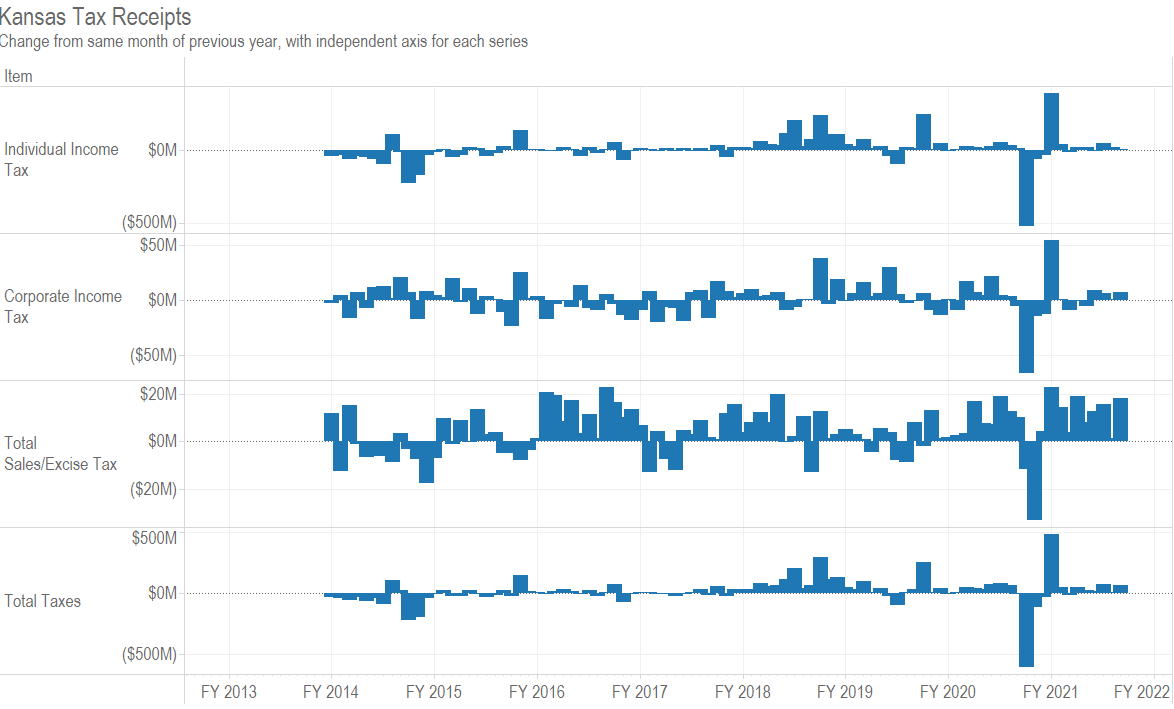
Kansas tax revenue, March 2021
For March 2021, Kansas tax revenue was 12.7 percent greater than March 2020. Over the nine months of the current fiscal year, revenue is 14.0 percent higher than at the same point of the previous year.
-
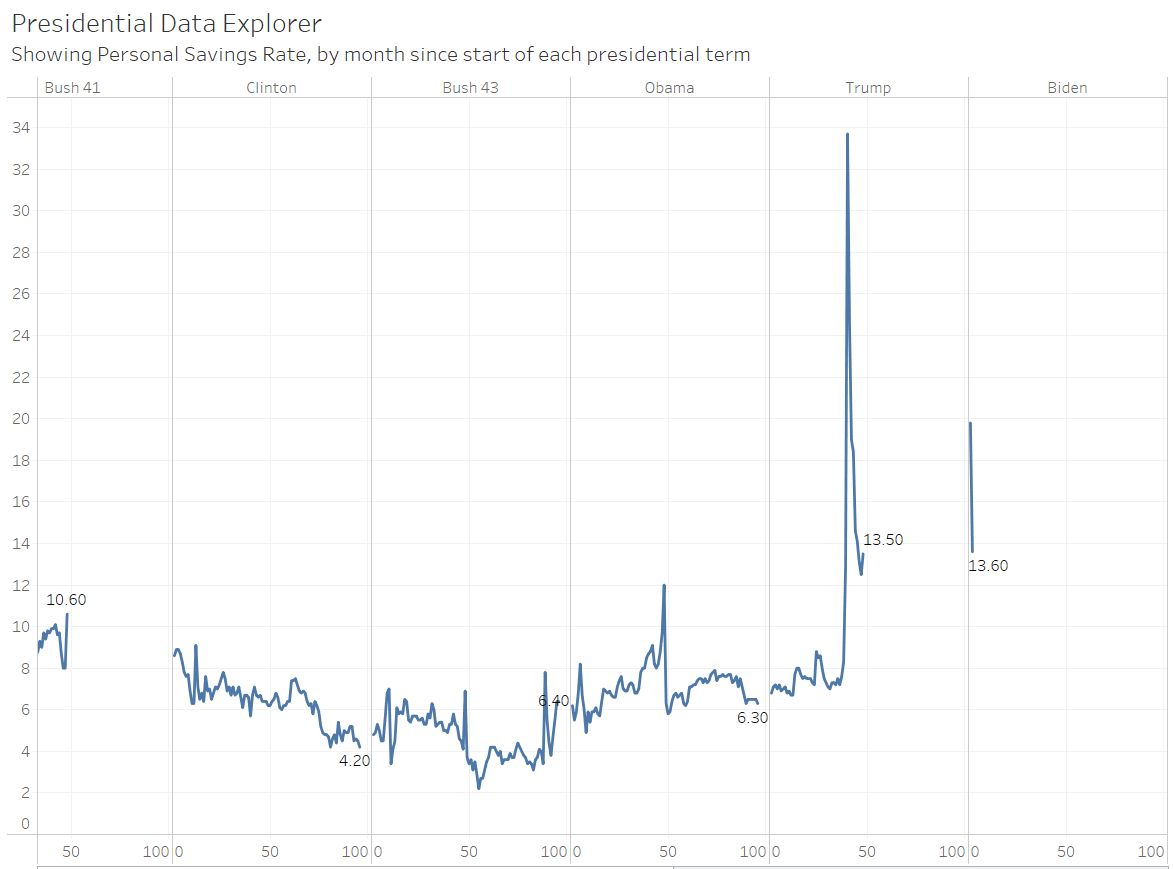
Updated: Presidential data explorer
Explore the economic record of presidents through the lens of data, with new updates for August.
-

Kansas GDP, fourth quarter of 2020
In the fourth quarter of 2020, the Kansas economy grew at the annual rate of 4.0 percent. GDP grew in all states, with Kansas performing in the middle.
-
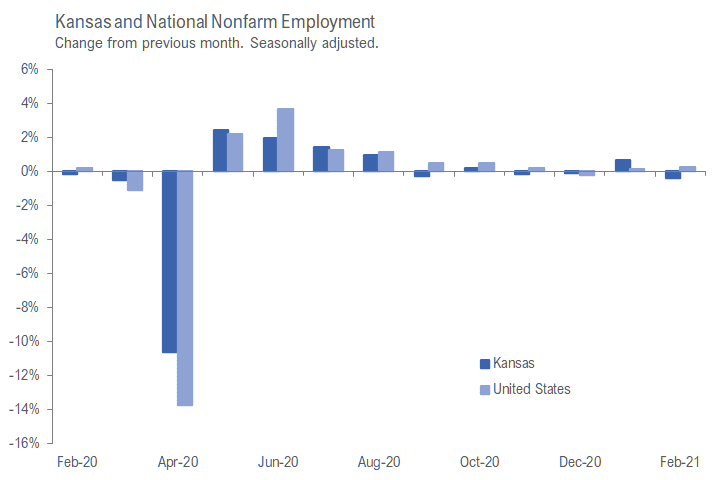
Kansas jobs, February 2021
In Kansas for February 2021, the labor force shrank, the number of people working fell, and the unemployment rate fell.
-
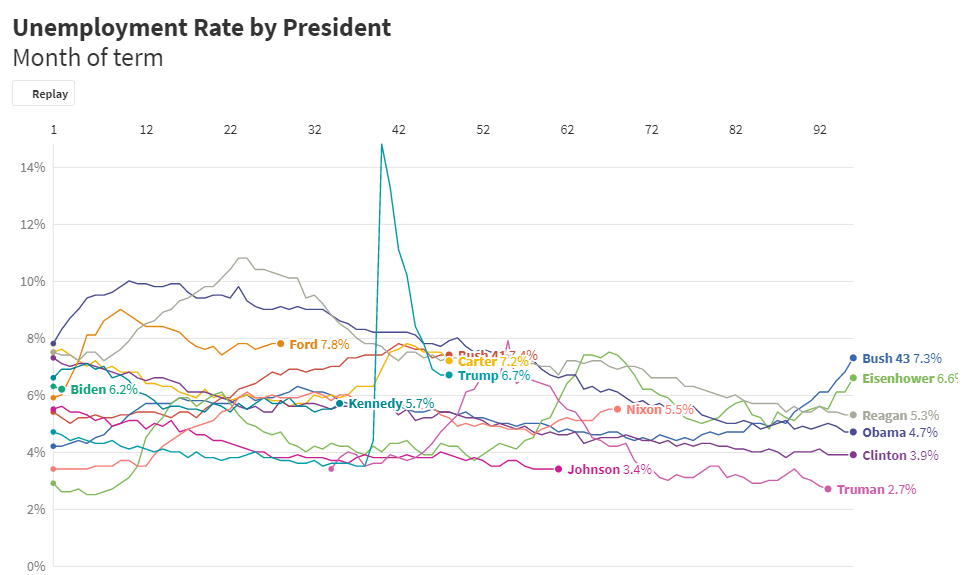
Unemployment by president
An interactive visualization of unemployment by presidential terms.
-

Kansas jobs since pandemic
Examining the effect of the pandemic on Kansas jobs using industry groups.
-
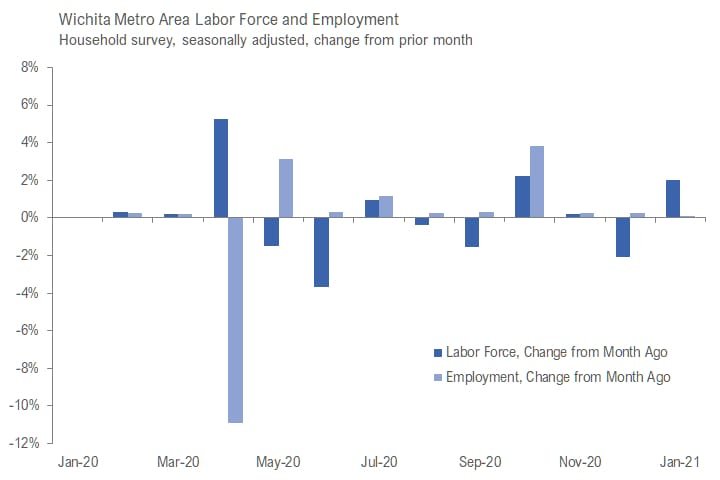
Wichita jobs and employment, January 2021
For the Wichita metropolitan area in January 2021, the number of unemployed persons is down, the unemployment rate is up, and the number of people working is down when compared to the same month one year ago. The recent trend is positive.
-
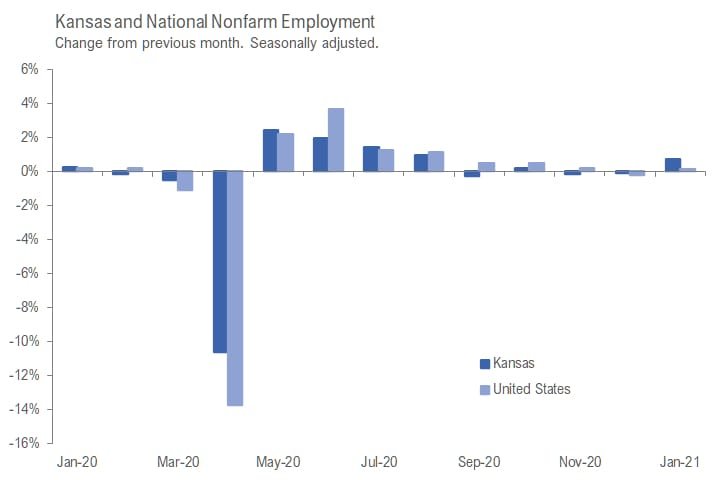
Kansas jobs, January 2021
In Kansas for January 2021, the labor force shrank while the number of people working rose, resulting in a drop in the unemployment rate.